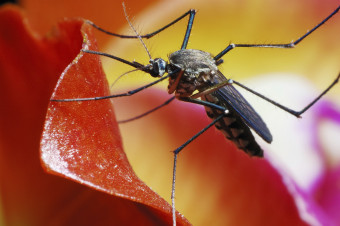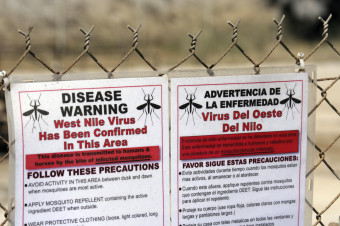The relationship between biodiversity loss and the emergence, resurgence and spread of disease organisms is of growing international importance. Naturally occurring microbes - including bacteria, viruses, fungi and protozoa - comprise a significant portion of wild biodiversity worldwide. In many ways, these organisms are responsible for supporting and regulating a range of key ecosystem functions, and so provide the foundation for a wide range of ecosystem services. For example, bacteria and fungi are vital to waste decomposition and nutrient cycling, driving primary productivity and affecting climatic patterns on a global scale. Disease-causing microbes (pathogens) and parasites play an equally important role in ecosystem functioning and productivity, and are essential to maintaining the health of ecosystems and populations of wild flora and fauna. The loss of biodiversity and ecosystem services is increasingly recognised as a risk factor in emergence and transmission of diseases between people, livestock, crops and wildlife. Of particular importance is how the ecological cycles of disease-causing organisms may be disrupted, exposing communities to new or increased disease risks.
There is evidence that the emergence of many infectious diseases, including Coronaviruses, Ebola, hanta viruses, malaria, and HIV, are connected to human impacts on wildlife and ecosystems, including inter alia habitat disturbance, unsustainable trade in bushmeat and other country foods, and the wildlife trade. Urban sprawl, encroachment into wilderness areas, and pollution of oceans and inland waterways have also been linked with the spread of diseases of people and wildlife. Outbreaks of zoonoses (diseases spread from animals to man), including the international spread of highly pathogenic strains of avian influenza, may also be facilitated by these activities as they affect the integrity of ecosystems and the services they provide.
Another issue of concern is the risk of spread of pathogens from humans to vulnerable wildlife populations, a risk which can be associated with ecotourism. For example, there are concerns that exposure to human diseases including TB and scabies could pose a serious threat to endangered mountain gorillas in Uganda, while human TB has decimated populations of mongooses and suricates in Botswana.
Certain negative associations between biodiversity and health status are also important to recognise, particularly for the conservation community. For example, research has shown that the geographic occurrence of biodiversity hotspots may correlate with focal points for disease organisms. In certain areas or situations, disease risk within a community may increase with proximity to wild areas or intact natural habitats, including for example certain forest areas or wetlands, though the underlying causes might not be understood. However, disease organisms may be considered an essential element of healthy ecosystems, and a high diversity of parasites or pathogens may actually be important for maintaining a favourable conservation status for some species of wildlife. Therefore, it may often be the case that the status of local biodiversity is less important as a risk factor for disease outbreaks than the integrity of the ecosystems involved, or the interactions that take place between biodiversity and human communities, as these may affect disease ecology. For example, deforestation in parts of South America and Africa has been correlated with increased risk of malaria transmission, while deforestation in some parts of Asia has been associated with a reduced risk.
The dynamics in these situations are not yet full understood, and it is increasingly clear that each situation must be assessed at the landscape level, accounting for the role of people and ecosystems in the wider ecological landscape, and for the root causes of biodiversity change or health impacts associated with political and economic activities. The influence of climate change on ecosystem processes and disease ecology is a further complicating factor.


